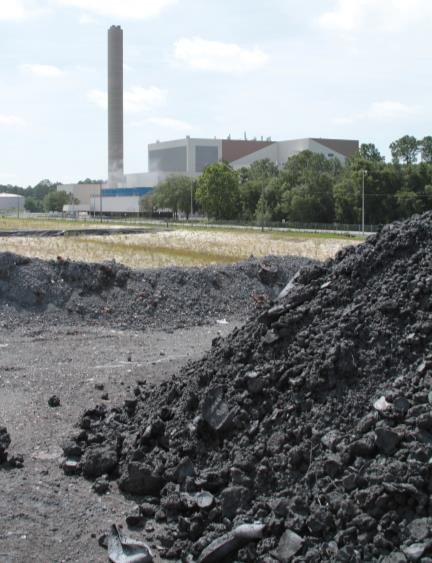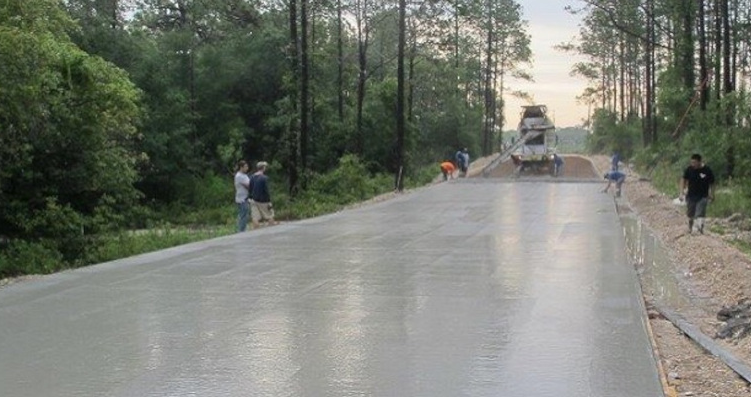By Ines Aviles-Spadoni, M.S., M.A., Research/Communications Coordinator, UFTI

Who would have thought the household garbage that makes its way into landfills could be turned into byproducts used for building roads, sidewalks and buildings?
“Landfills are rich with hidden value – they are not a final resting place at the end of a material’s life, but the beginning of a new cycle,” said Chris Ferraro, associate professor in the UF Department of Civil and Coastal Engineering. “We aspire for people to envision landfills as industrial mines, much like miners see gold hidden within stone.”
In some areas of the U.S., garbage is burned to produce electricity instead of being buried in landfills. This process is known as municipal solid waste incineration (MSWI). The byproduct of this process is called MSWI ash. Usually, this ash finds its way back into a landfill.
The good news is that worldwide, there has been growing interest in this ash, with it gaining popularity in Europe and Asia.
At UF, researchers in the Department of Civil and Coastal Engineering are evaluating how MSWI ash performs in the U.S. when reused in construction materials, specifically in Florida’s environment. The team includes Ferraro; Timothy Townsend, distinguished professor at Edmunds & Associates, Inc.; Jordan Kaylin Magnuson, graduate student; and Ashish Dinesh Patel, postdoctoral research associate.
Projects in counties such as Hillsborough, Palm Beach, and Pasco have shown that MSWI ash works well when used as a road base or when added to cement. These field tests are helping to provide data not only on the usefulness of MSWI ash but also on its durability and strength. Extensive research is also being conducted to ensure that ash is environmentally friendly and doesn’t leach into the ground, affecting the water table.
“Florida operates more MSWI facilities than any other state in the US,” Townsend said. “Given our growing population and the ever-increasing need to expand our infrastructure, research on how best to safely repurpose MSWI ash into value-added construction products makes perfect sense.”
The UF’s team is looking at different stages of the concrete-making process to determine how best to incorporate MSWI ash – whether it is as an aggregate in concrete, a partial replacement for cement, as an additive in autoclaved aerated concrete (AAC), or as an ingredient in producing cement.

Looking at various concrete-making processes, the team wants to zero in on the most effective way to incorporate MSWI ash. The researchers are testing whether the ash can be used as an aggregate in concrete, as a partial replacement for cement, as an additive in autoclaved aerated concrete (AAC), and as an ingredient in the production of cement.
Used as an aggregate in cement, tests in Florida have found that using 50 percent bottom ash, or the heavier portion of the MSWI ash, has met the Florida Department of Transportation (FDOT) performance standards for sidewalks and pavements, and other nonstructural applications such as curbs, pathways and road bases.
MSWI ash can be used as a partial substitution for cement used in concrete mixtures because it contains the same type of minerals that give cement its strength and durability. MSWI is rich in calcium, silica, aluminum and iron – the same ingredients found in regular cement. For the concrete industry, this type of ash can be a more sustainable and environmentally friendly option.
“Our research has shown that MSWI ash can be a valuable alternative to typically mined ingredients that are used in construction, such as concrete, road base, and cement,” Magnuson said. “For example, MSWI bottom ash may partially replace coarse aggregate in non-structural concrete, for use in sidewalks, parking lots, or curbs.”
Recent work by Ferarro and his colleagues noted the production of hydrogen gas while some test mortar samples were undergoing the curing process. Gas production in concrete is undesirable and can lead to cracking and weakening of the cement, thus decreasing its strength and durability. The researchers cite studies that report using alkaline washing of the MSWI ash to eliminate gas production.
“Metallic aluminum in MSWI bottom ash reacts with water, forming hydrogen gas that increases porosity and weakens concrete,” Patel said. “High-pH pretreatment dissolves oxide layers, exhausting gas formation potential and improving strength and durability more effectively than physical separation methods.”
While the production of hydrogen gas in the cement mixture is not welcomed in conventional concrete products, it is actually a positive phenomenon AAC. AAC is a lightweight construction material made by mixing cement with aluminum. This mixture produces little air bubbles that render a material that is lightweight, strong, resistant to fire, and great for insulation and soundproofing.

Ferraro and his colleagues have also explored reusing MSWI ash directly as an ingredient in cement. Pilot studies performed by the team have found that adding 1 to 2 percent of MSWI ash to cement kilns produces cement that performs just as well as using conventional materials.
The team’s research shows how waste can find a new purpose as a valuable resource for the concrete and construction industries. Using MSWI ash to build infrastructure for everyday uses – such as sidewalks and roads – is not only valuable to society but also to the environment.
“For me, it’s inspiring to see something once destined for a landfill become a resource that builds our communities,” Ferraro said. “It’s a shift from waste management to resource management – turning yesterday’s trash into tomorrow’s infrastructure and sustainability.”
